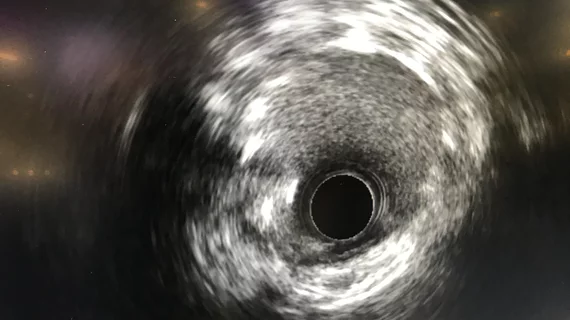Intravascular imaging-guided percutaneous coronary intervention (PCI) is associated with significant benefits compared to angiography-guided PCI, according to a new meta-analysis presented at ESC Congress 2023, the annual meeting of the European Society of Cardiology.
The investigation included data from two new studies presented as part of ESC Congress 2023 and simultaneously published in the New England Journal of Medicine: the ILUMIEN IV trial and the OCTOBER trial.[1, 2]
An increasing number of studies in recent years have examined the potential benefits of intravascular imaging-guided PCI, but a majority of them have focused on intravascular ultrasound (IVUS) as the modality of choice. The ILUMIEN IV and OCTOBER trials, however, relied heavily on patients treated with optical coherence tomography (OCT) instead of IVUS.
The ILUMIEN IV trial included nearly 2,500 PCI patients who were randomized to either undergo OCT-guided PCI or angiography-guided PCI. OCT guidance was linked to a larger minimum stent area, but no increase in the number of patients with target vessel failure.
The OCTOBER trial, meanwhile, included more than 1,200 PCI patients with a confirmed complex bifurcation lesion randomized to undergo OCT-guided PCI or angiography-guided PCI. Patients with these complex lesions were less likely to experience a major adverse cardiovascular event (MACE) at two years if they underwent OCT-guided PCI than if they underwent angiography-guided PCI.
The final analysis included data from the ILUMIEN IV trial, OCTOBER trial and several previously completed studies comparing intravascular imaging-guided PCI and angiography-guided PCI. Adding up all of the included trials, researchers were left to compare 7,038 patients treated with intravascular imaging-guided PCI, including 3,120 who underwent IVUS-guided PCI, 2,826 who underwent OCT-guided PCI and another 1,029 who were randomized to undergo IVUS- or OCT-guided PCI. These patients were compared with 5,390 treated with angiography-guided PCI, and each participant was followed for a period of 6 months to five years.
The primary endpoint of the meta-analysis was target lesion failure, which the authors defined as a composite of cardiac death, target vessel myocardial infarction (MI) or target lesion revascularization. Overall, intravascular imaging-guided PCI helped reduce that composite endpoint by 31%. It also was linked to significant reductions in cardiac death, target vessel MI, target lesion revascularization and stent thrombosis.
“The results of this network meta-analysis emphasize the importance of physicians using intravascular imaging with either OCT or IVUS to optimize stent outcomes and improve the long-term prognosis of their patients,” Gregg Stone, MD, a cardiologist and professor of cardiology with Icahn School of Medicine at Mount Sinai in New York, said in a statement.
Additional ESC Congress 2023 coverage is available here, here and here.

